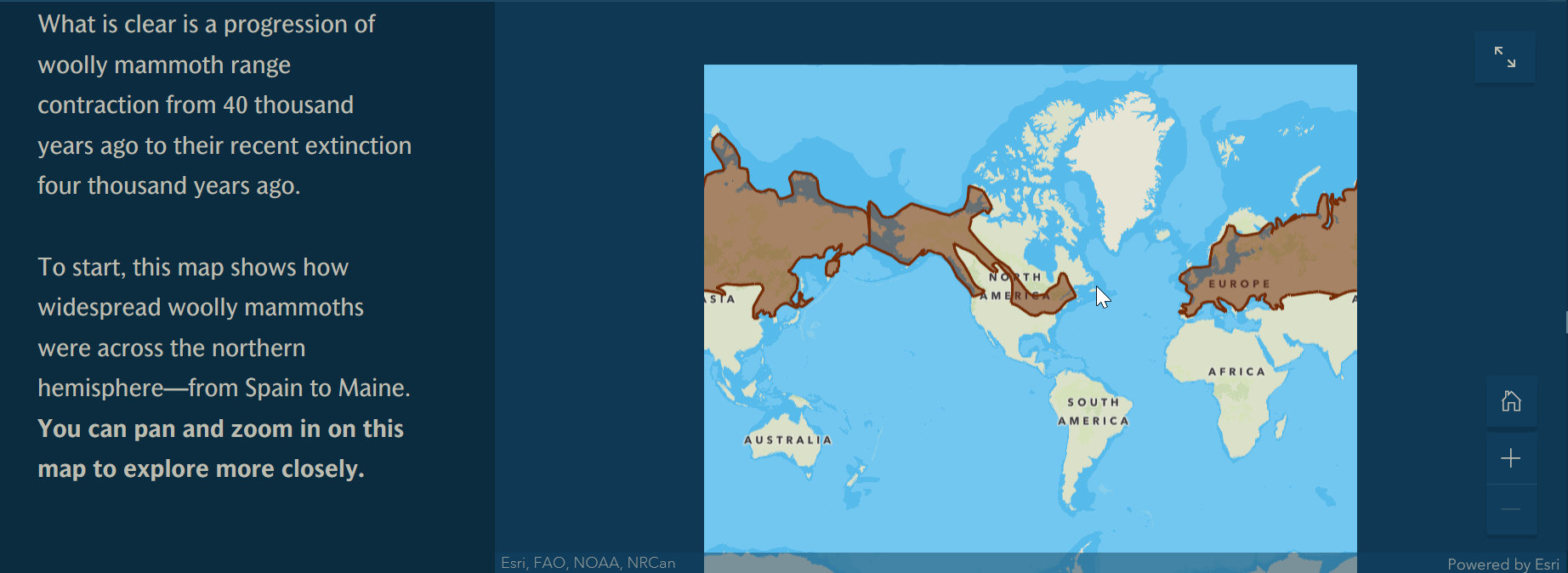It is clear, therefore, that we are now in an altogether exceptional period of the earth’s history. We live in a zoologically impoverished world, from which all the hugest, and fiercest, and strangest forms have recently disappeared […]
The UCMP launched a pilot version of a new education and outreach resource for connecting Ice Age animal losses to today through interactive maps. This resource — Where the Wild Things Were — highlights the geographic declines of charismatic animals, currently including woolly mammoths (Mammuthus primigenius), saber-toothed cats (Smilodon fatalis), jaguars (Panthera onca), and more within the United States. By curating these losses, the project’s goal is to connect the wonder and awe of Quaternary paleontology to present-day conservation concerns and action.

Biodiversity is necessary for humanity, and species have value in their own right, but many species are in trouble. For example, vertebrate population sizes have declined by an average of 52% in the past 40 years. By 2050, 15-37% of species from regions across the globe are projected to become extinct if mid-range estimates for global warming unfold. However, modern losses are arguably an accelerated form of a broader trend spanning the past 50 thousand years. Half of the world’s large mammal species have become extinct in this time, with these losses peaking at the end of the Pleistocene, about 12 thousand years ago. This means that the paleontological record of such a recent timespan can serve as a powerful conservation message to connect paleontology with the world today.

To explore these trends, Where the Wild Things Were is an atlas of wild animal losses throughout the Quaternary. It focuses on the natural history, ranges, occurrences, and localities of charismatic animals to create stories of interest through time. For example, there is a cave site in northern Spain with evidence of a cave lion (Panthera spelaea) that was butchered for its pelt. Brown bears (Ursus arctos) once lived in Egypt. Jaguars occupied Tennessee in the Pleistocene. And tigers (Panthera tigris) were spotted just west of present-day Kharkiv, Ukraine, until the Middle Ages.
The pilot version of this project—funded through a 2021 Paleontological Society Education and Outreach Grant — focuses on top charismatic animal occurrences within the United States organized and shared thematically along with “fun facts” in ArcGIS StoryMaps. This pilot version was released on #fossilfriday, Mar 4, 2022, and we look forward to feedback to decide which species and regions to highlight next, what features to add, and so forth. By creating this resource, we hope to inspire users to be awed by the surprising locations where animals lived in the past, feel concerned about trends of animal losses, and act to conserve the last charismatic animals left. Dive into the collection and feel free to ask questions or leave us feedback at wtwtw.ucmp@gmail.com